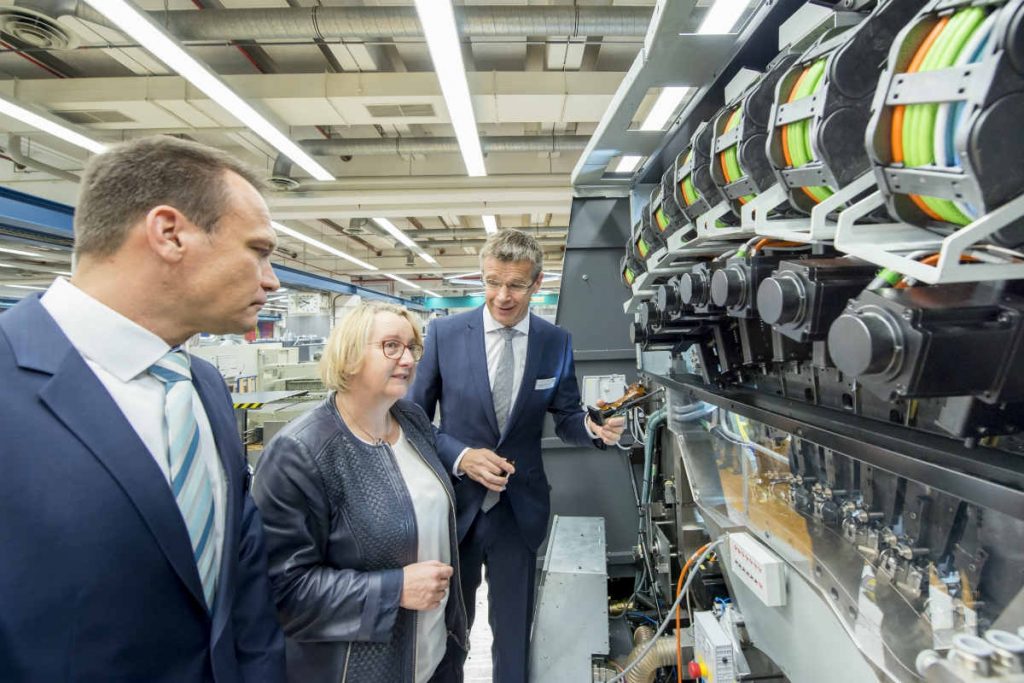
Facilities
News
Heidelberg Invests $72M in Innovation Centre
November 28, 2016 By PrintAction Staff
 Science Minister Bauer (centre) learns about the newest digital technologies from Heidelberg with Frank Kropp, Head of R&D (left) and Stephan Plenz, Board Member for Equipment (right).
Science Minister Bauer (centre) learns about the newest digital technologies from Heidelberg with Frank Kropp, Head of R&D (left) and Stephan Plenz, Board Member for Equipment (right). Heidelberger Druckmaschinen AG today launched its new development centre project at the company’s Wiesloch-Walldorf site in Germany. Targeting a completion date for 2018, the centre will be home to 1,000 workers in what Heidelberg projects will become the world’s most state-of-the-art research facility for the printing industry.
The company unveiled its development centre plans in the presence of its new CEO, Rainer Hundsdörfer, and Theresia Bauer, Minister of Science, Research and the Arts for the German state of Baden-Württemberg. Heidelberg is investing some €50 million ($72 million Canadian) in this new innovation hub for an industry that, according to the press maker, has a global annual turnover of around €400 billion.
“This investment represents a new beacon in Baden-Württemberg’s research landscape,” said Bauer. “Building a development center of this size and quality proves that Heidelberger Druckmaschinen AG bases its decisions on a long-term strategy and makes the future worth looking forward to.”
Heidelberg explains, despite a difficult economic situation in recent years, the company at no time cut its research budget, focusing instead on developing new, innovative products and services.
“We deliberately chose Baden-Württemberg because it combines an excellent environment with highly qualified experts,” said Hundsdörfer. “A highly modern and future-oriented working environment will be created in Wiesloch-Walldorf, designed to support interdisciplinary and cross-functional development processes.”
The printing industry now requires new applications and control technologies, explained the company in relation to the creation of its new centre, in addition to the ongoing development of traditional offset and digital printing technologies. Heidelberg also points to printing on three-dimensional objects made from all kinds of materials, enabling the customized printing of glass, wood, plastic, and other materials.
Heidelberg noted, as an indication of its continuing transformation, that there are now more than 250 software specialists working for the company. The company has also started employing chemists, for example, for developing and producing its own environmentally progress inks for new applications.
“The example of Heidelberg is demonstrating that even a large company can reinvent itself,” said Bauer.
Print this page